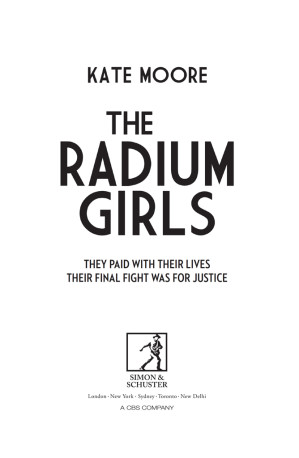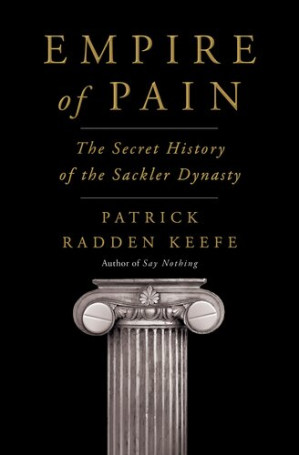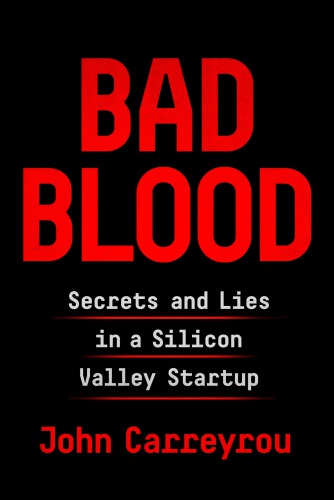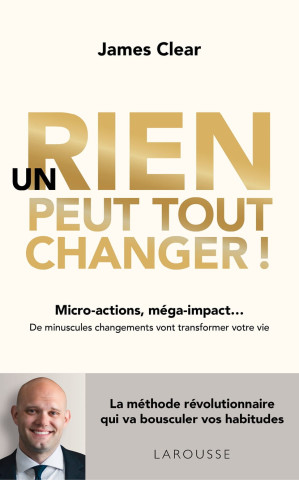Name the harm and own the narrative.
Grace Fryer keeps a meticulous medical diary that later becomes courtroom ammunition.

Book summary
by Kate Moore
How a cohort of teenage factory workers changed labor law by fighting radioactive poisoning
Dial painters poisoned by luminous paint take on corporate denial
Topics
Read Part I (Orange, NJ) and Part II (Ottawa, IL) separately, tagging every moment when the women collect evidence or win public sentiment. Let Readever's AI questions surface patterns in corporate obfuscation, then capture how each legal milestone (Roeder v. U.S. Radium, the Ottawa case) shifted policy. By the time you reach the epilogue, you'll have a reusable framework for advocating safer workplaces.
Things to know before reading
Kate Moore braids archival research and oral histories to follow the young women who hand-painted radium watch dials in New Jersey and Illinois from 1917 onward. Taught to lip-point their brushes, they ingested lethal amounts of radium that made their bones crumble and jaws glow. After years of gaslighting by employers and government labs, the "shining girls" weaponized medical exams, sympathetic journalists, and innovative tort strategies to win precedent-setting settlements. The book exposes how their pain reshaped workplace safety standards worldwide.
The dial painters prove that storytelling, science, and solidarity can force structural change.
Grace Fryer keeps a meticulous medical diary that later becomes courtroom ammunition.
Pathologist Harrison Martland proves radium lodges in bone, ending the 'syphilis' smear.
Catherine Donohue testifies from a stretcher to secure federal labor protections.
Ready to continue? Launch the Readever reader and keep turning pages without paying a cent.

Patrick Radden Keefe
Another corporate accountability saga tracing the Sackler family's opioid empire.

Rebecca Skloot
Examines medical ethics, race, and consent around the HeLa cell line.

John Carreyrou
Modern-day whistleblowing inside Theranos' biotech deception.
With Readever you can isolate each tactic—organizing medical records, recruiting expert witnesses, harnessing media—and connect it to modern whistleblowing scenarios. Use the insights to coach teams on documenting harm, aligning allies, and sustaining campaigns that outlast corporate delay tactics.
Key idea 1
Grace Fryer keeps a meticulous medical diary that later becomes courtroom ammunition.
The women go from whispered complaints about "radium jaw" to publishing first-person testimonies in major newspapers. Moore shows how reclaiming the story undermines company talking points and wins allies such as labor columnist Walter Lippmann. Use this to remind teams: document early, publish strategically, and let lived experience puncture corporate spin.
Key idea 2
Pathologist Harrison Martland proves radium lodges in bone, ending the 'syphilis' smear.
Scientific allies translate suffering into irrefutable data. Radium autopsies, Geiger readings, and courtroom demonstrations shift judges from sympathy to action. Apply the lesson by partnering with specialists who can quantify harm, whether you're chasing environmental, medical, or algorithmic abuses.
Key idea 3
Catherine Donohue testifies from a stretcher to secure federal labor protections.
The second wave of dial painters push for systemic reforms—statutes of limitations changes, OSHA-like inspections, and recognition of occupational disease. Their persistence makes modern radiation safety rules possible. Frame your own advocacy through this lens: leverage personal cases to codify durable regulation.
The Radium Girls centers on the teenage factory workers who painted luminous watch dials in Orange, New Jersey, and Ottawa, Illinois. Moore braids courtroom transcripts, personal letters, and long-buried medical reports to reveal how the "shining girls" went from patriotic breadwinners to whistleblowers challenging corporate science. The book documents the slow violence of radium poisoning—glowing bones, collapsing jaws, stillbirths—and the women’s determination to prove the cause despite smear campaigns and legal stall tactics.
It is as much about information asymmetry as it is about radiation. Moore shows how expertise, solidarity, and storytelling flipped the power dynamic and gave rise to modern workplace safety law.
Open Readever's reader to highlight passages, ask the AI companion questions, and keep exploring without paying a cent.
Critics applaud Moore for giving the dial painters full interior lives instead of relegating them to footnotes. Her narrative switches between investigative journalism and intimate biography, making the science readable without diluting outrage. Reviewers from The Guardian to Booklist praised the book for blending momentum with meticulous sourcing. The audiobook—narrated by Angela Brazil—also drew acclaim for keeping dozens of characters distinct.
Critical reception: Winner of the Goodreads Choice Award for History, the book spent weeks on bestseller lists and inspired stage plays plus a documentary. Labor historians often assign it alongside The Jungle when teaching U.S. regulatory history.
HR and compliance leaders building safer reporting systems
Healthcare professionals studying occupational disease
Feminist historians and readers of narrative nonfiction
Activists looking for case studies on bottom-up regulatory change
Kate Moore is a British author and editor who previously wrote works of popular history and biography. While living in the United States she encountered the dial painters’ story and spent years combing through archives, court documents, and family interviews. Moore's background in narrative nonfiction—she worked on The Tattooist of Auschwitz—informs her ability to balance rigorous research with emotional storytelling.

David Grann
Investigates injustice against the Osage Nation and the birth of the FBI.

Rebecca Skloot
Centers another group of women whose bodies transformed medicine without consent.

Isabel Wilkerson
Epic narrative about the Great Migration and resilience under systemic injustice.
Build your personalized reading stack
Review original court filings and medical charts alongside Moore's narrative.
Build a reusable checklist for reporting unsafe workplace practices.
Compare this case with later environmental-justice titles in one reading lane.
Export your highlights to brief a compliance or HR team quickly.
Sign in to Readever to keep reading with AI guidance, instant summaries, and synced notes.
Moore’s account proves that ordinary workers can rewrite laws when they control the narrative, partner with credible experts, and treat each legal victory as a step toward precedent. It challenges today’s readers to examine their own workplaces for power imbalances that echo the radium era.

James Clear
Design micro-actions that support the kind of advocacy these women embodied.

Yuval Noah Harari
Zoom out to see how technological progress often arrives with ethical debt.

Robin Wall Kimmerer
A reminder to value reciprocal relationships with the natural world.
Start reading The Radium Girls for free and unlock personalized book journeys with Readever.